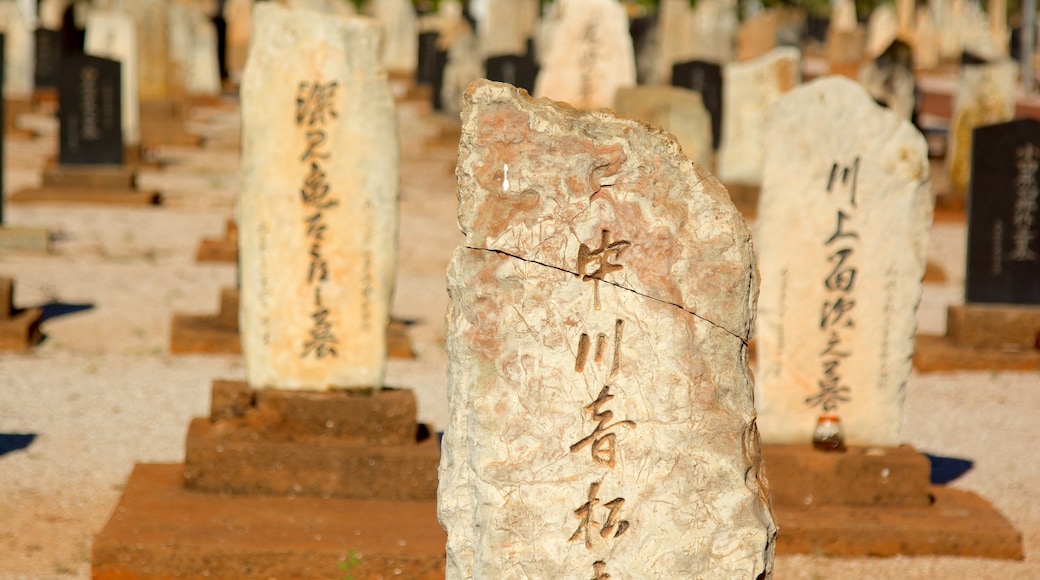Take a moment of peace and tranquillity among the solemn obelisks, tombstones and memorials at the Japanese Cemetery in Broome. The largest of its kind in Australia, this cemetery pays tribute to the Japanese people who lost their lives during Broome’s pearling boom in the early 20th century.
Waves of people flocked to Broome to join the town’s lucrative pearl industry in the late 19th and early 20th centuries. Among them were Japanese, Chinese, Malays, Filipinos and Javanese people, all of whom contributed to Broome’s rich multicultural heritage. Harvesting the oysters and operating the pearl luggers was risky work, however, and hundreds were killed as a result.
At the Japanese Cemetery’s traditional-style gates, you’ll see a sign with some information in English and Japanese. More than 700 graves can be found here, most of which commemorate Japanese divers who died from decompression sickness or drowning while diving for pearls.
Explore the rows of memorials and stones, many made from pink-hued beach rocks and inscribed with sweeping Japanese script. Some of the funerary art honours Japanese people lost at sea during storms and cyclones.
Many sightseeing tours around the town make a stop at the Japanese Cemetery. Join an informative tour to learn more about the history behind the cemetery and the influence these immigrants had on Broome’s early cultural development. The residents of Broome celebrate the town’s cultural diversity at the Shinju Matsuri (Festival of the Pearl), held annually in September.
The Japanese Cemetery is located on Port Drive, next to the Chinese Cemetery and the Broome Cemetery. The cemetery is situated halfway between Broome and Cable Beach, so combine your visit with a trip to the beach and nearby Gantheaume Point. Visit in the morning to avoid the heat of the afternoon and ensure you bring some water. The cemetery is free to enter and is an interesting place to learn about the strong cultural connection between Australia and Japan.













